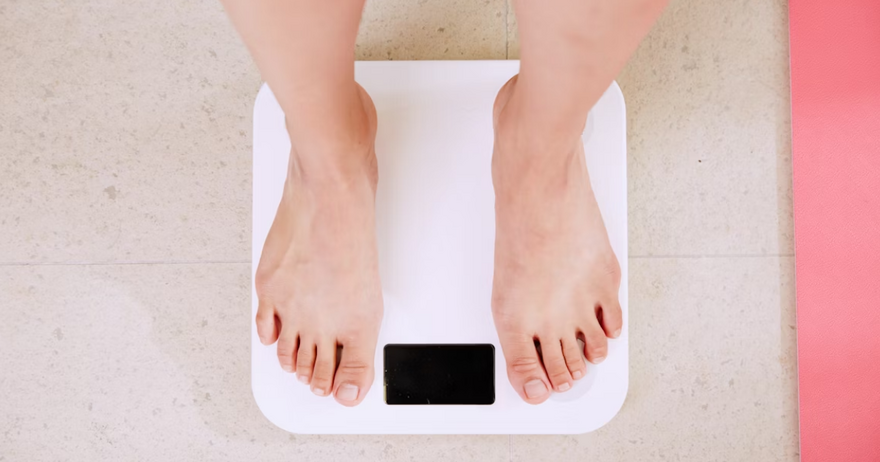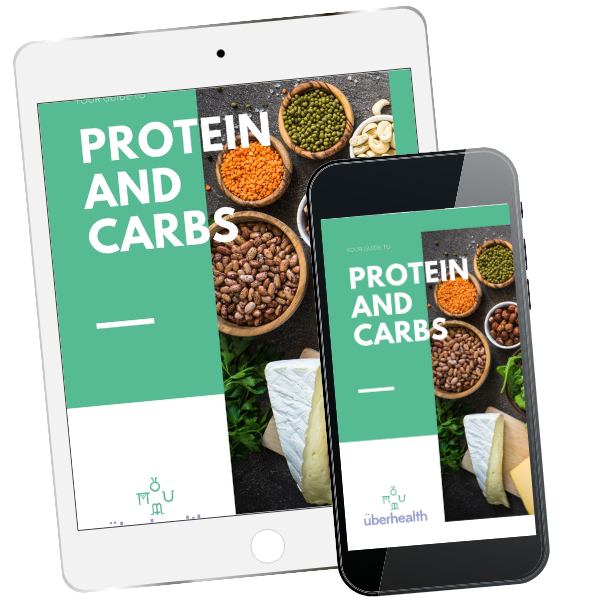What to Eat (and Not Eat) to Lose Weight

Today, let's talk about what to eat to lose weight. And just as important - what not to eat. I get a lot of clients coming in wanting to shift a little weight, lean down, or tone up. And, as I mentioned in my last post, there’s a whole lot more to weight loss than just what’s on your plate. Now, don’t get me wrong - WHAT we eat is so important from an energy and nutrient perspective. There are just many other factors that affect our digestion, absorption, assimilation of foods - and therefore our weight loss journey. That being said, what we eat IS a big game-changer. If you’re doing all the other parts of the picture right, such as:
- limiting stress and distractions when eating
- taking time to exercise and move your body
- and timing your food intake to match your energy needs throughout the day
But you’re making poor food choices - you’re unlikely to see the changes you’re after. As much as it kills me to say, when it boils down to it, nutrition for weight loss and training is largely a numbers game. Essentially, to lose weight, you need to consume LESS energy than you expend. And to gain muscle, you need to cone MORE energy than you expend. Let's dive into what to eat to lose weight.
Think Of Your Body Like A Bank
Let's start by running through an analogy I use in clinic to talk to my clients about calories. Picture your body as a piggy bank or purse. The amount of money you have in your bank is the sum of your basal metabolic rate (BMR) plus your physical activity level. Factors such as your:
- age
- gender
- type of job you do
- exercise
- and stress levels
All affect how much money is in your bank. Once you understand that, the next question is - what can you spend your 'money' on? Well, every item of food or drink you consume has a dollar value (aka calories). This is mostly determined by the food’s macronutrient content. Some foods are what I call a great value for money - they may be lower in calories or full of vitamins or minerals. Other foods offer a worse bang for your buck. These are the foods that cost a lot of money (calories) and really don’t give us much for it. They include things like:
- chocolate
- take-aways
- alcohol
These foods are sometimes referred to as "empty calories," reflecting their higher caloric cost without offering much benefit. With all that in mind, let's look at some food philosophies often used for weight loss as well as some specific foods that may help or hinder you on your weight loss journey.
The low down on low fat
The low-fat diet for weight loss has been around for decades. When I think about low-fat diets, I think about the era of Aerobics Oz Style, fluro, and big hair. It was a time when men were bulking up, and women were trimming down. There are two reasons why I think low-fat diets came about. First, of the three macronutrients, fats have the highest calorie per gram ratio. Whilst protein and carbs are about 4 calories per gram, fats are approximately 9 calories per gram. So, when folks see this number, many think that by limiting the fats in the diet, they will limit the calories. On paper, this makes perfect sense. But there are a few things that factor into this, especially when we're choosing what to eat to lose weight. Firstly, fats are tasty! And secondly, fats help us feel fuller for longer. For some peeps, when they decrease fats, they end up filling their plates with higher sugar foods to compensate for taste and the decrease in calories.
Is Keto the key?
Ketogenic (Keto) diet is the polar opposite of a low-fat diet. Keto and Low Carbs/High Fat (LCHF) diets allow minimal carbohydrates, a higher fat percentage, and low to moderate protein intake (depending on the diet). A keto diet can be up to 75% dietary fats! You may be scratching your head wondering how the opposite of a low-fat diet could help us lose weight ... Keto or LCHF diets work on the premise that they help to reset the body weight set point. The concept of body weight set point involves the relationships between hunger, the feeling of fullness, hormones that signal satiety, and adjustment to energy expenditure. These relationships are ultimately controlled by two parts of the brain: the hypothalamus and the reward centre of the brain, the ventral striatum. The body has a certain point of balance called homeostasis. When we deviate too far from this point, certain hormones are released and chemical reactions start to occur to get us ‘back to normal.’ Folks who are overweight or obese have their own homeostasis and setpoint. This means if they reduce their calories or increase exercise, the body will try to bring them back to their ‘normal’ by signalling hunger and limiting energy expenditure. Since we know dietary fats are high in calories and help us feel satiated - both physically and chemically - the premise of Keto is that a diet higher in fats will allow someone to have a calorie deficit without feeling hungry or deprived. Have you tried a ketogenic diet before? I’d love to hear how you found it – tag me on Instagram!
Whole lotta whole foods!
The Whole Foods diet. In case you missed it, I wrote a whole post on whole foods here. When it comes to health, wellbeing, and weight loss, a whole foods diet is so important. No matter whether you’re doing LCHF, Keto, Low Fat, quitting Sugar - whatever your food philosophy is and however you want your weight loss journey to look, a whole foods diet is key! By eating a rainbow of vegetables and fruits (if you’re not LCHF or Keto), you give your body the best chance to maximise its vitamins and minerals intake.
- Bright coloured berries and veg help provide antioxidants to limit free radical damage
- Green leafies help boost your magnesium (which aids in muscle strength if you’re hitting the gym)
These foods are great for your piggy bank or purse – great 'bang for your buck' foods.
Pick your proteins!
Often when we think of protein, we think of Arnie Schwarzenegger or The Hulk, bulking up and amounting to masses of muscles. These images are part of the reason why so many folks start dropping the protein when they try to lose weight. Knowing that muscle weighs more than fat - if you’re basing your weight loss journey just on the number on the scale - you may run into a bit of difficulty. As you start exercising more, your body will start growing and strengthening its muscles. And as you lose more body fat, start leaning down and toning up, you may find the numbers on the scale confusing or frustrating. At this point, it’s important to use other markers to map your progress. Try tracking things like ...
- How do you feel?
- Do you like how you look?
- How are your clothes sitting?
Weight loss isn’t always about the number on the scale – please remember that, peeps! But back to protein. As I’ve said before, your body doesn’t like to run out of fuel or even the perception that it’s about to run out of fuel. When our body senses its fuel (blood sugar) start to dip low, it sends signals to your brain that it needs a quick hit of energy, stat! This is often when we find ourselves reaching for a sugary treat or snack because we know it’ll give us the quick hit of energy we need. Enter protein. Protein helps give us a sustained energy source. It helps to keep our blood sugar at an even keel, and it also helps keep us feeling fuller for longer. By having a little bit of protein with every meal and snack, you help minimise those alarm bells and lessen the risk of reaching for a high-GI snack. Now, it doesn’t have to be a steak for breakfast, lunch, and dinner. And a chicken drumstick for morning and afternoon tea. It can be nuts, seeds, yogurt, eggs, legumes, cheese, or, of course, it can be fish and meat. I invite you to review your eating habits. Are you getting a hit of protein evenly throughout the day? Or do you find your only real intake of protein is at dinner?
Lastly, liquids
Remember that piggy bank I spoke about early? And how important it is to choose good 'bang for your buck' foods over empty calories? Nothing can undo a well-made meal plan, weight loss journey, or training schedule like liquid calories. They are sneaky. Liquid calories are the ones we often don’t even think about. We forget to add them to our diet app if we're tracking our intake. Or, we forget to mention them when talking to our trainers about what we had for dinner the night before. Sometimes intentionally, sometimes not. Liquid calories can really add up without even realising it. If I have a client with a serious weight-loss goal and we aren’t quite getting where we want to go – I’m eyeing off those sneaky liquid cals. Let's look at a few of the culprits.
- A large latte, whole milk, no sugar = 224cals
- Same sized drink with skim milk = 128cals
- A small glass of red wine with dinner = 109cals.
- If you choose a juice instead of a soft drink with your lunch, it's a great step in the right direction – but still, 166cals.
So, what might this look like for a client sitting in front of me in clinic? Let's say on an average workday, you have a latte when you get to the office and another one during a meeting or afternoon tea. Then, once you’re home for the day, having just one cheeky glass of red means you’ve consumed 557 calories just in liquids. If you’re on a “low calorie” food plan – that could add up to 42% of your daily calorie budget! Plus - don’t forget your piggy bank. These foods are empty foods, costing you a lot of energy dollars for very little nutritional gain.
What about you?
Okay, folks. The challenge has been set. If weight loss, for whatever reason, is something you’re working on this year I encourage you to think about the above points.
- How’s your energy piggy bank?
- What are you buying with your energy dollars?
- Are you enjoying a beautiful whole foods diet?
As always, if you’re keen to work with me, head over to my courses, or start with my e-books and guides, to help you help yourself. Or, if you’d like to dive deeper into your health with me, book a private consultation here.
FREE RESOURCE


